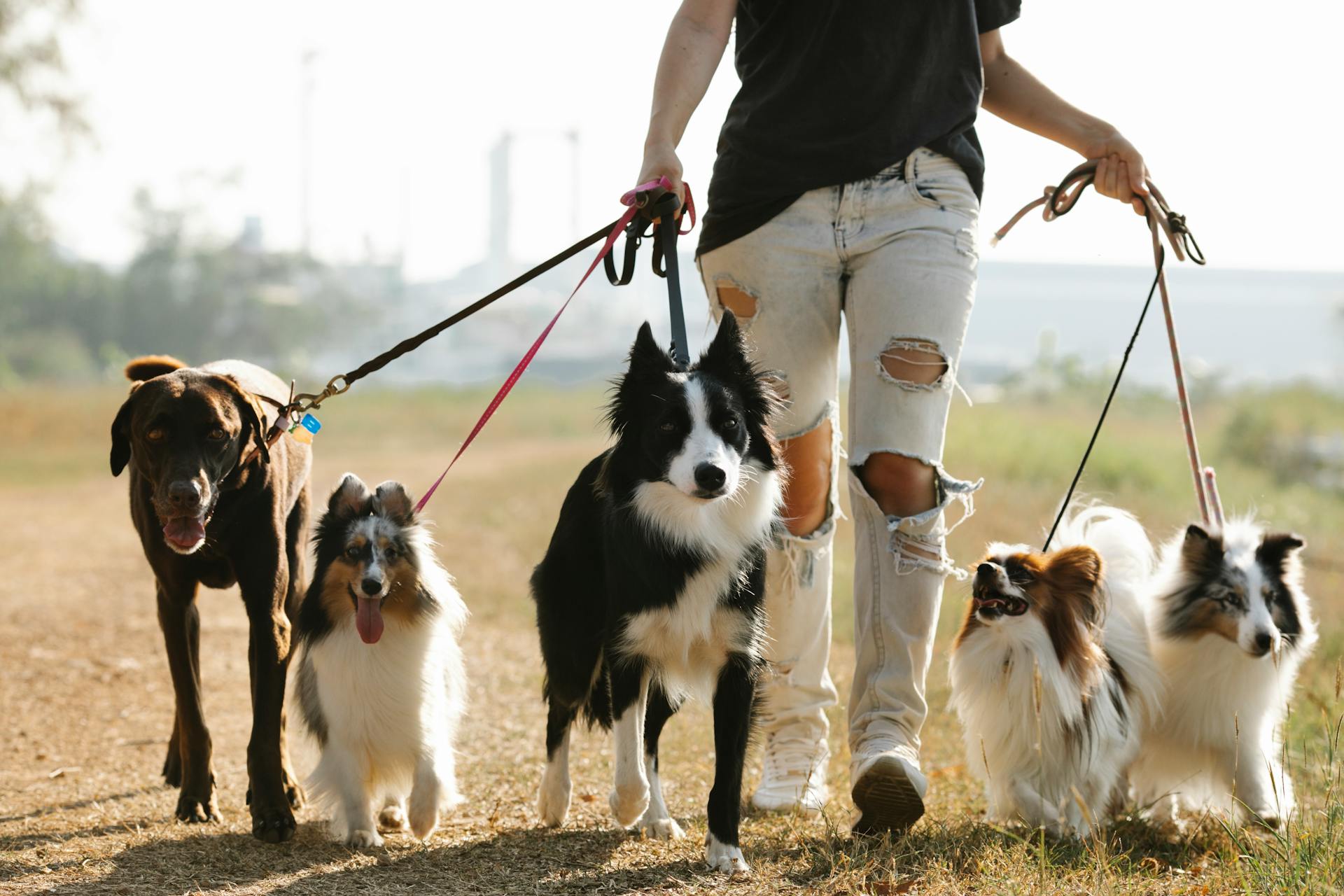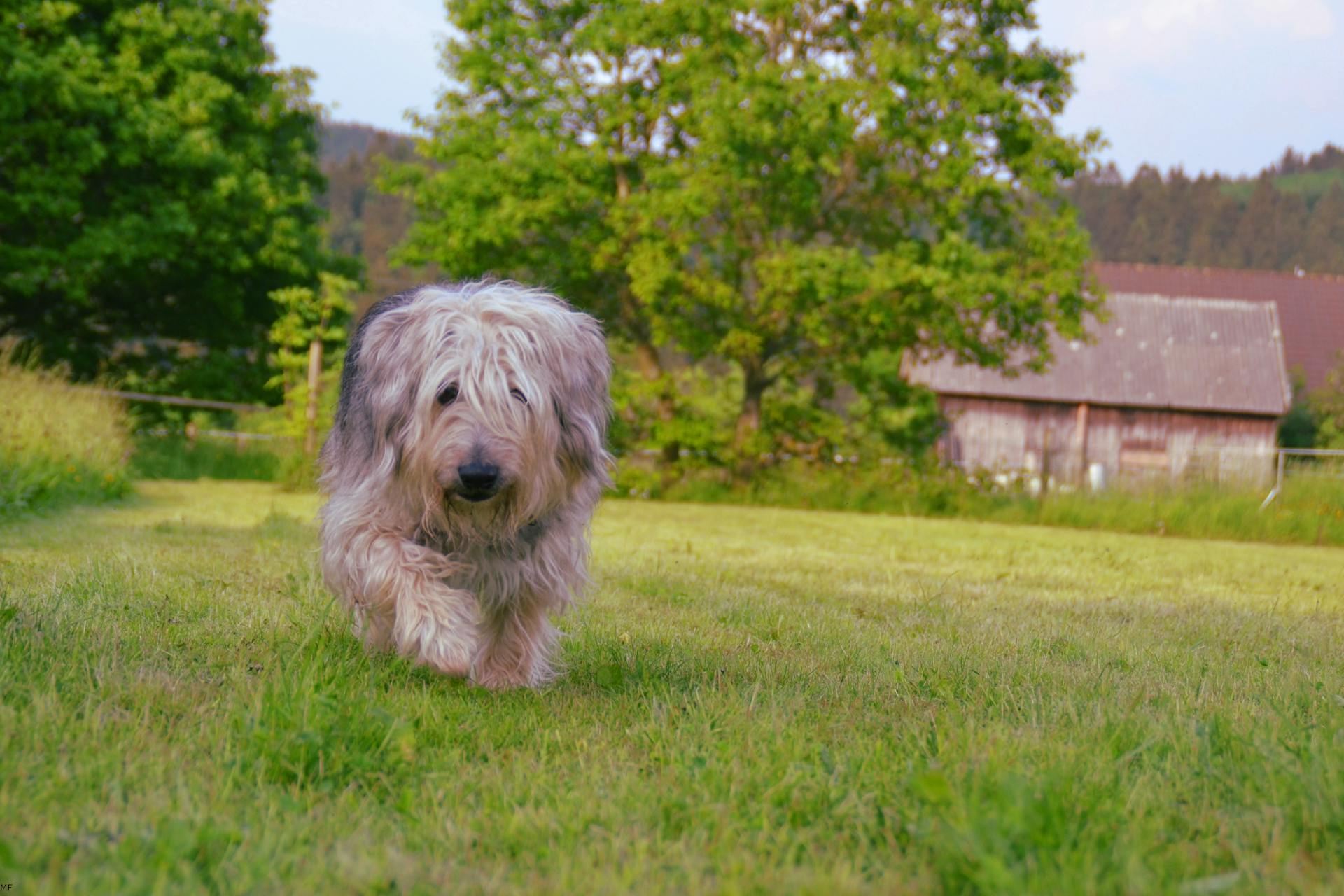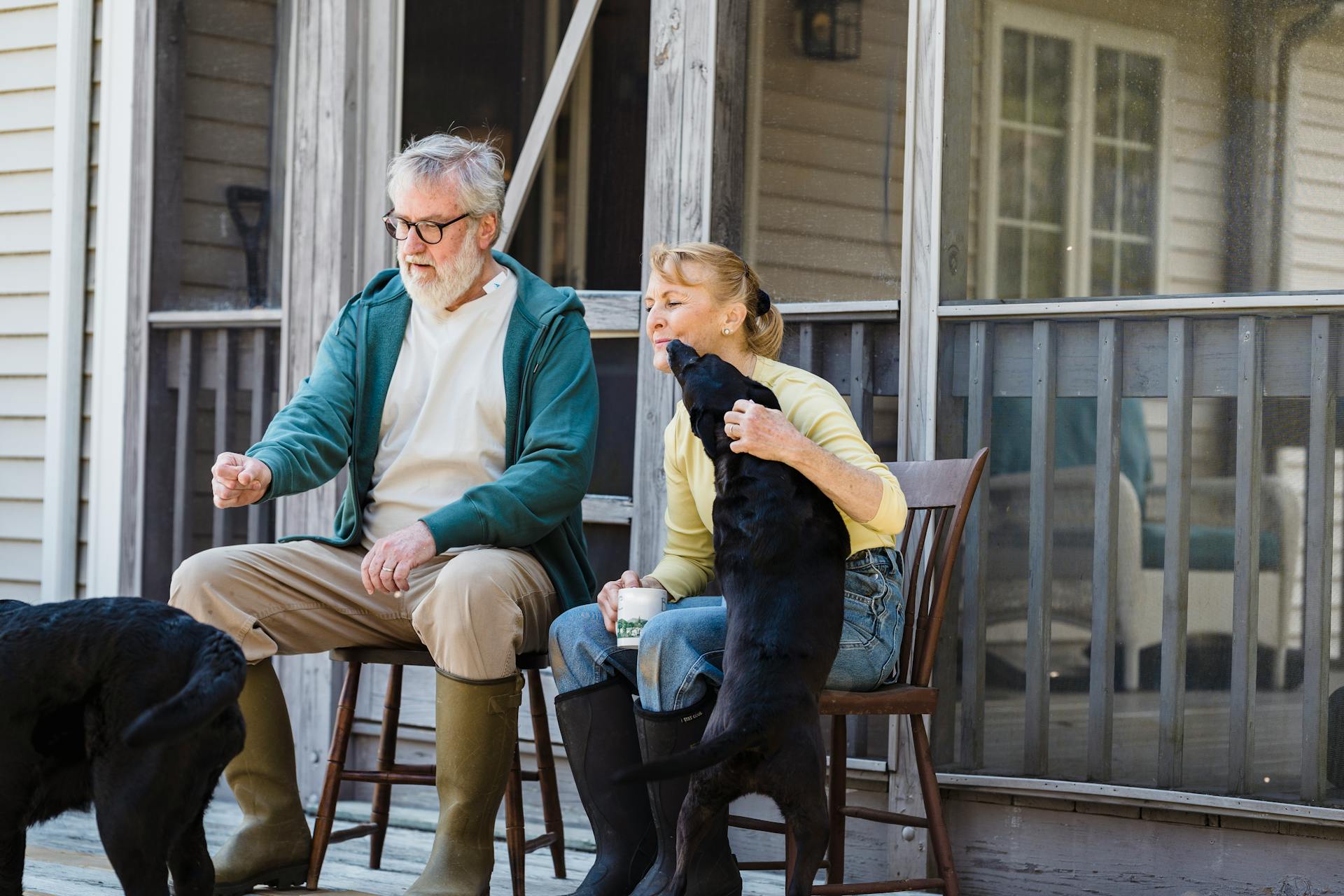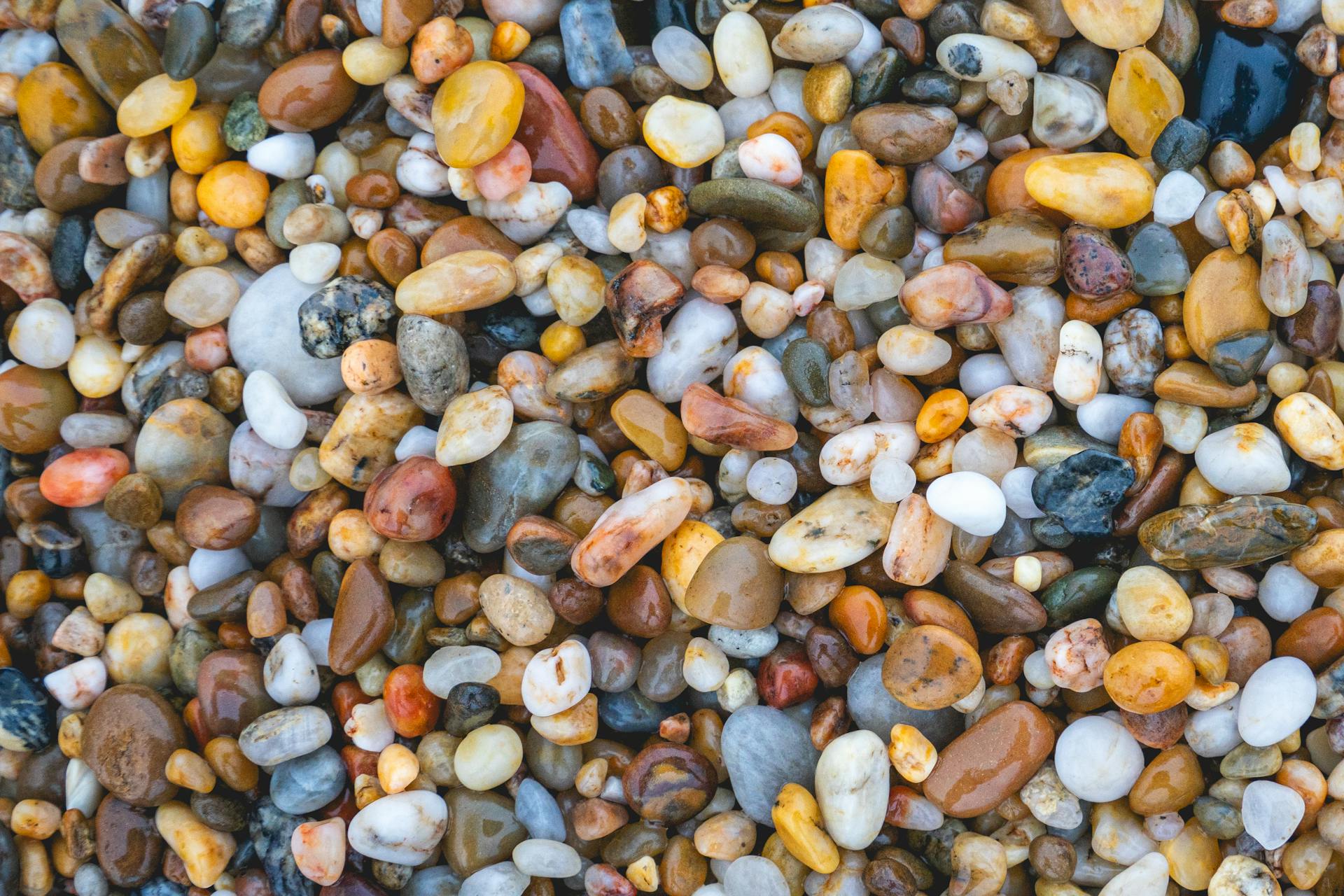
Pibble dogs, also known as Pitbull mixes, are a popular breed due to their friendly and outgoing personalities.
They require regular exercise to stay happy and healthy, and a daily walk of at least 30 minutes is essential.
Why Pit Bulls Bite
Pit Bulls bite, but it's not always a cause for concern. In fact, gentle nibbling can be a sign of love and bonding between you and your pibble.
Their nibbling can be a way of showing love, seeking attention, or even trying to groom you. This behavior is usually not a cause for concern as long as it's gentle and doesn't cause discomfort.
It's essential to set boundaries and teach your pibble how to express themselves in ways that are safe and respectful to everyone involved. This means monitoring their behavior and intervening if it escalates into something more harmful or unwanted.
Understanding Pit Bull Behavior
As you learn more about your pibble dog, you'll start to notice some unique behaviors that are specific to the breed. Pibble nibbling, for example, is a gentle and playful behavior that shows trust and affection.
Dogs engage with the world around them primarily through their mouth, much like how human babies do. This is a key tool for exploration, interaction, and expression.
Pibble nibbling is often compared to "gumming", and it's generally a sign that your pit bull feels comfortable and relaxed in your presence.
If you notice that your pit bull is engaging in excessive cobbing behavior, it might be worth discussing this with a vet or a pet behaviorist. They can help you understand if this behavior is a sign of an underlying issue and suggest ways to address it.
To better understand your pibble dog's behavior, it's essential to distinguish between pibble nibbling and dog cobbing. Here's a summary of the key differences:
By understanding these differences, you can better navigate your pibble dog's behavior and create a more harmonious relationship with your furry friend.
Managing Pit Bull Nibbling
Managing Pit Bull Nibbling is all about understanding the behavior and providing a suitable outlet for it. It's essential to recognize that Pibble Nibbling is a gentle, playful behavior that shows trust and affection.
To manage Pibble Nibbling, you can try investing in durable chew toys designed for powerful chewers like pit bulls. These toys can provide an acceptable outlet for your pit bull's nibbling behavior.
Providing your pit bull with regular exercise, mental stimulation, and a calming environment can also help reduce stress-induced behaviors like cobbing. Cobbing can sometimes indicate that your dog is experiencing discomfort or stress, so it's crucial to address the root cause and provide a suitable solution.
Here are some features to consider when choosing a chew toy for your pit bull:
Remember, managing Pibble Nibbling requires patience, consistency, and understanding. By providing a suitable outlet for your pit bull's behavior, you can help them feel happy and content.
Distinguishing Nibbles from Bites
Pibble Nibbling is a gentle, non-aggressive behavior where your pit bull uses their front teeth to lightly gnaw at something they're fond of, often as a display of affection or comfort. This is not intended to harm or destroy.
Understanding the difference between Pibble Nibbling and biting is crucial, as they convey drastically different messages. Biting involves the use of a dog's full jaw strength, often inflicted when a dog feels threatened or needs to assert dominance, and can be harmful.
Pibble Nibbling on humans is a common occurrence and is generally considered harmless, often a sign of affection or comfort. Recognizing the difference between a pibble nibble and dog cobbing is essential in promoting responsible and knowledgeable pet ownership.
Here are some key differences between Pibble Nibbling and Dog Cobbing:
Blankets and Toys: Is It Normal?
Pibble Nibbling on blankets and toys is a common sight in many pit bull households. It's a natural behavior for dogs to use their mouths to interact with their environment.
According to Example 5, Pibble Nibbling on blankets and toys is perfectly normal. Dogs may nibble on these items out of curiosity, playfulness, or even as a comforting mechanism.
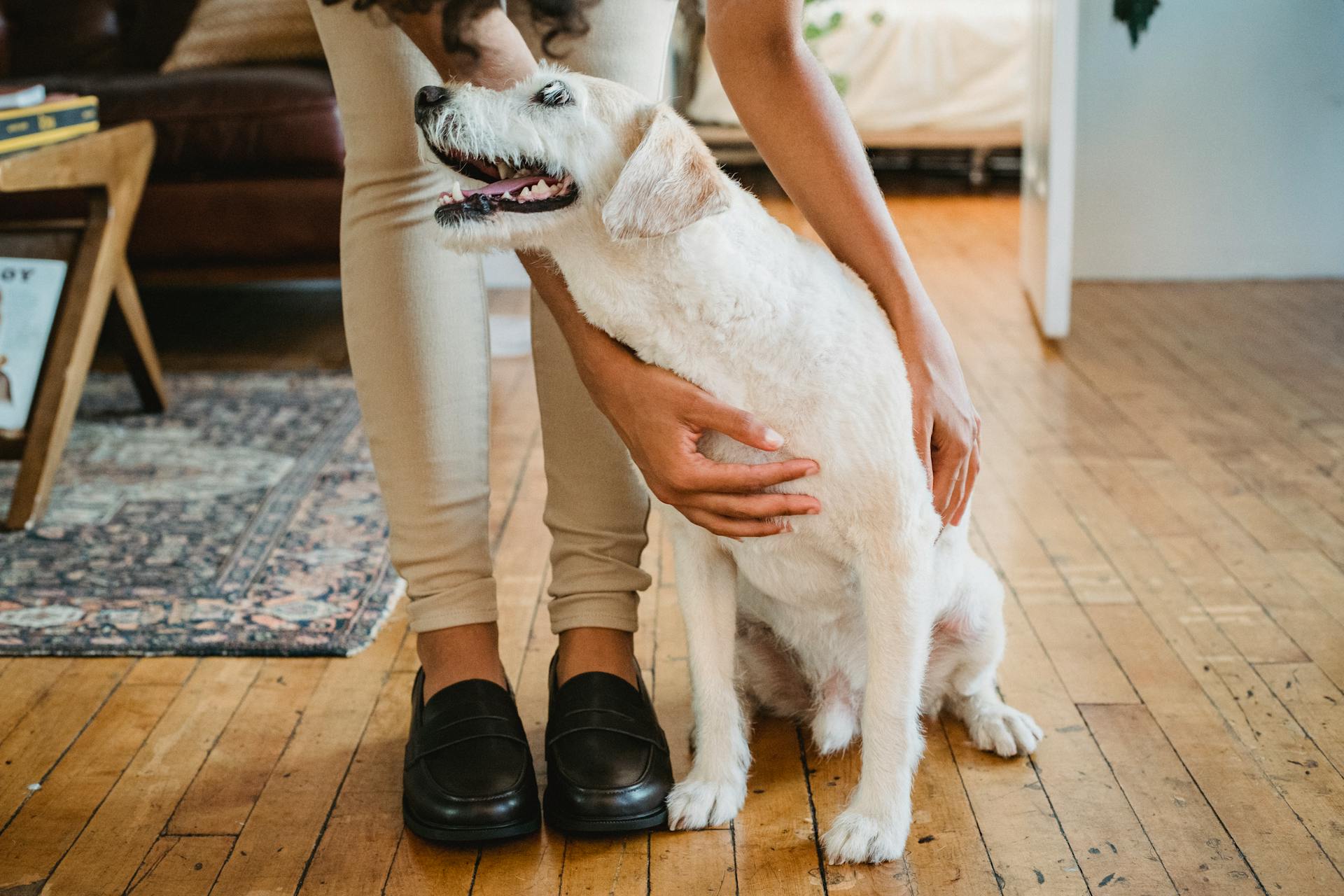
As mentioned in Example 5, it's essential to ensure that the objects your pit bull nibbles on are safe and free from small parts that could be accidentally swallowed.
To determine if your pit bull's Pibble Nibbling behavior is normal, consider the intensity and context of the behavior. If it's gentle and playful, as described in the Feature table in Example 1, it's likely a sign of affection or exploration.
Here's a quick reference guide to help you understand your pit bull's Pibble Nibbling behavior:
By understanding the context and intensity of your pit bull's Pibble Nibbling behavior, you can better determine if it's normal or a cause for concern.
Products for Managing Pit Bull Nibbling
Managing Pit Bull Nibbling can be a challenge, but with the right approach and tools, you can help your furry friend express themselves in a safe and respectful way. Pibble Nibbling is a specific behavior exhibited by Pit Bulls, often a sign of affection or exploration.
Pibble Nibbling can be a gentle and playful behavior, but it's essential to distinguish it from dog cobbing, which can sometimes indicate discomfort or stress. If you notice excessive cobbing behavior, it's worth discussing with a vet or pet behaviorist.
To manage Pibble Nibbling, understanding its context is key. Recognize when this behavior is normal and when it may signal a need for intervention. Gentle and playful Pibble Nibbling is usually not a cause for concern, but it's crucial to set boundaries and teach your pibble how to express themselves in ways that are safe and respectful.
Products designed to manage Pibble Nibbling can be helpful, but they're not a substitute for training and socialization. Chew toys, interactive toys, and long-lasting chew treats can provide an acceptable outlet for your pit bull's nibbling behavior. At Pittie Choy, they offer a range of tough toys that can withstand the enthusiasm of a pit bull's nibble.
Here are some product options to consider:
- Chew Toys: Look for durable toys designed for powerful chewers like pit bulls.
- Interactive Toys: Try interactive puzzle toys that dispense treats when solved.
- Chew Treats: Always supervise your pit bull when they're enjoying a chew treat to prevent accidental swallowing of large pieces.
Remember to supervise your pit bull when introducing new products, and adjust as needed to ensure their safety and well-being.
Exploring Nibbling Roots
Pit bulls engage in Pibble Nibbling as a sign of affection, a way for them to bond with you, or as a self-soothing behavior. Some experts link it to their ancestry, as pit bulls are descendants of terriers and bulldogs, breeds known for grabbing and shaking objects in their mouths.
Their Pibble Nibbling might be a domesticated, softened version of this inherent instinct. It's an intriguing part of pit bull behavior that warrants a deeper look, one that sheds light on their loving nature often shadowed by unjust perceptions.
Pibble Nibbling is a gentle, non-aggressive behavior, a form of mouthing where your pit bull uses their front teeth to lightly gnaw at something they're fond of. This action is not intended to harm or destroy.
Pibble Nibbling on humans is also common and generally considered harmless, often a display of affection or comfort. It's essential to recognize the difference between Pibble Nibbling and biting, as they convey drastically different messages.
Understanding your pit bull's behavior is key to ensuring their well-being. Recognize the difference between a pibble nibble and dog cobbing, and respond appropriately. The loving and patient approach works best with our furry friends.
Pit Bull Ownership

Pit Bulls are often misunderstood, and their reputation precedes them.
They are a loyal and loving breed, making them a great companion for active families.
In fact, Pit Bulls are known to be one of the most affectionate breeds around, often described as " Velcro dogs" due to their tendency to stick close to their owners.
Are You Ready for a Bull?
If you decide to adopt a Pit bull, you will have a lifelong friend.
Pit bulls are loyal companions, and with proper socialization, they love people - all people.
They don't make good guard dogs because they tend to act on instinct to protect their "people" if someone or something threatens them.
Pit bulls are great with children, making them a wonderful addition to families.
If you're thinking about adopting a pup, consider the friendly Pit bull, they truly have a lot to offer.
They Are Loyal
Pit bulls are a true companion, and if you decide to adopt one, you'll have a lifelong friend.
They don't make good guard dogs, because they truly love people - all people if they are socialized properly.
Pit bulls are known for their loyalty and desire to please their owners, making them responsive to training and eager to learn.
Their loving nature and protective instincts make them great companions, who thrive in a loving environment where they're treated as part of the family.
With proper socialization, Pit bulls can form deep bonds with their human families and be reliable and trustworthy companions.
They're particularly fond of children, earning them the nickname "Nanny Dog", and will spend the entire day playing, cuddling, and just being around kids.
Pit Bull Origins and History
The Pit Bull is a breed with a rich and complex history.
They originated in England in the 19th century as a cross between the Old English Bulldog and the Old English Terrier.
Their original purpose was to participate in bloodsports like bull-baiting and dog-fighting.
The breed was later brought to the United States, where it became a popular family pet.
In the early 20th century, the American Pit Bull Terrier was recognized as a distinct breed by the United Kennel Club.
Related reading: American Bulldog Puppies Johnson Breed
Pit Bull Training and Development
Training your pibble dog requires patience and consistency. Start training early, ideally when your pibble is still a puppy, as they're most receptive to learning new behaviors.
Pit bulls are powerful breeds, and teaching them bite inhibition is crucial. This skill helps them control the force of their mouthing, making it easier to interact with them.
Use a high-pitched yelp to signal to your pibble that their nibbling is too hard. This is a natural way for puppies to communicate with each other.
Ignoring unwanted behavior is also key. If your pibble continues to nibble too hard, remove your attention and stop play for a short period. This shows them that hard nibbling ends the fun.
Praise your pibble when they exhibit soft nibbling or licking instead of hard nibbling. This reinforces the behavior you want to see.
Remember, every dog learns at their own pace, so keep your expectations realistic and consistent.
Related reading: What Can You Feed Dogs Other than Dog Food
Pit Bull Rescue and Therapy
Pit Bulls like Patrick can make incredible therapy dogs, helping people in need and bringing joy to those around them.
Patrick was a stray on the streets of Chicago, just three days away from being euthanized, before being rescued by the group Peace for Pits.
Rescue groups like Peace for Pits play a crucial role in saving the lives of dogs like Patrick and giving them a second chance.
Patrick's past experiences likely contributed to his unique personality, which his owner Morgan describes as "awkward" but lovable.
Morgan's severe Type 1 Narcolepsy made her prone to falling, but Patrick's assistance helped her avoid serious injuries and even saved her life on multiple occasions.
Patrick's size and strength made him a valuable companion for Morgan, who now works from home and appreciates his constant support.
By adopting a rescue Pit Bull like Patrick, you can give a loving home to a dog in need and potentially receive life-changing companionship in return.
For another approach, see: German Shorthaired Pointer Life Stages
Frequently Asked Questions
What is a pocket pibble?
A Pocket Pibble is a cross between an American Pitbull Terrier and a Patterdale Terrier, making it a unique designer breed. Learn more about this highly sought-after hybrid dog breed.
Sources
- https://www.pittiechoy.com/blogs/pit-bull-training-behavior/pibble-nibble
- https://groundsandhoundscoffee.com/blogs/recent-posts/coffee-chat-why-pibbles-are-one-of-the-most-lovable-dogs-to-rescue
- https://toothandhoney.com/the-pibble-nibble-the-miracle-of-strange-pit-bull-behavior/
- https://www.dogstardaily.com/blogs/pro-pibble-grow-thick-skin
- https://post.bark.co/fun/patrick-rescue-pibble-therapy-dog-most-award-dingus/
Featured Images: pexels.com
